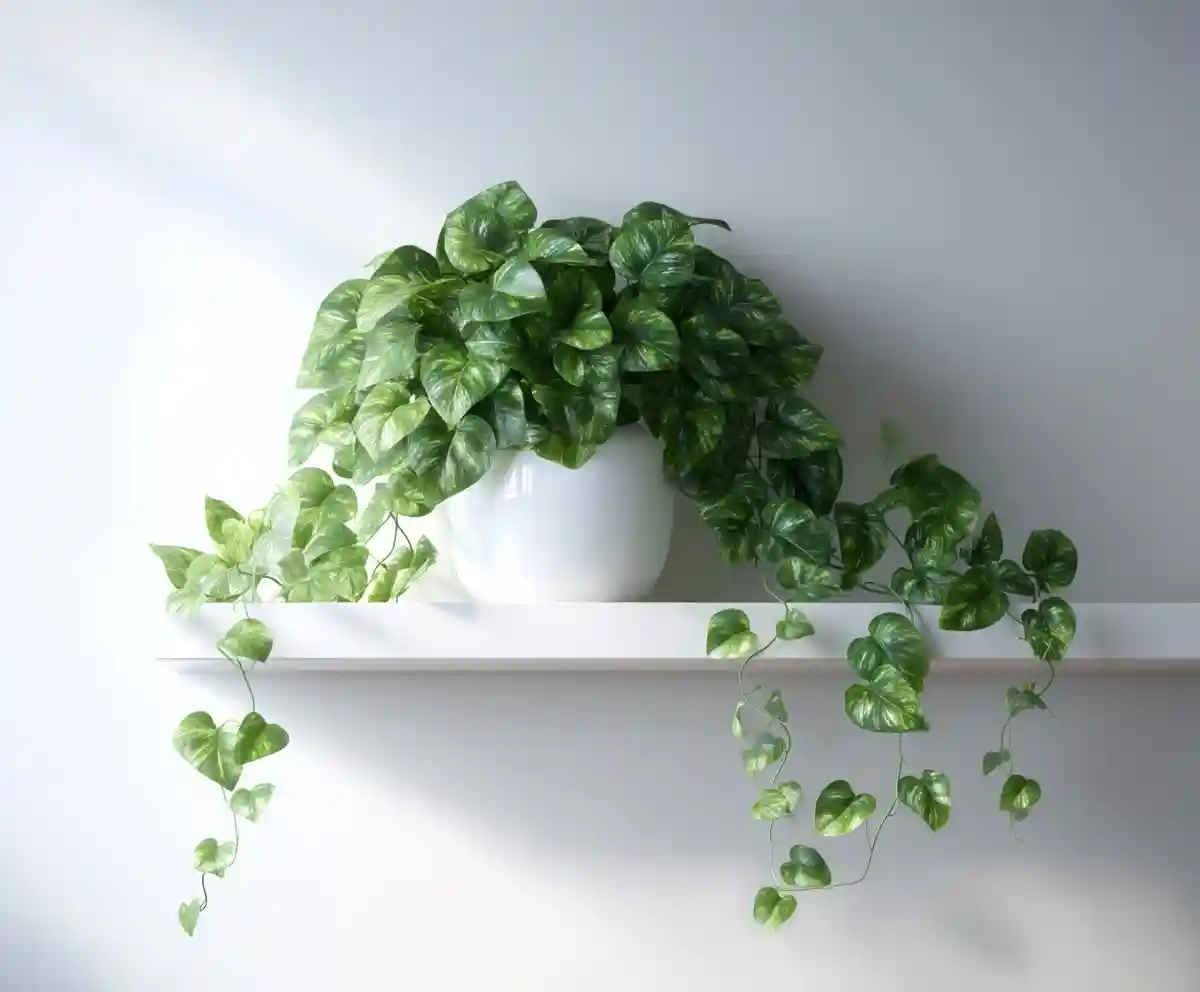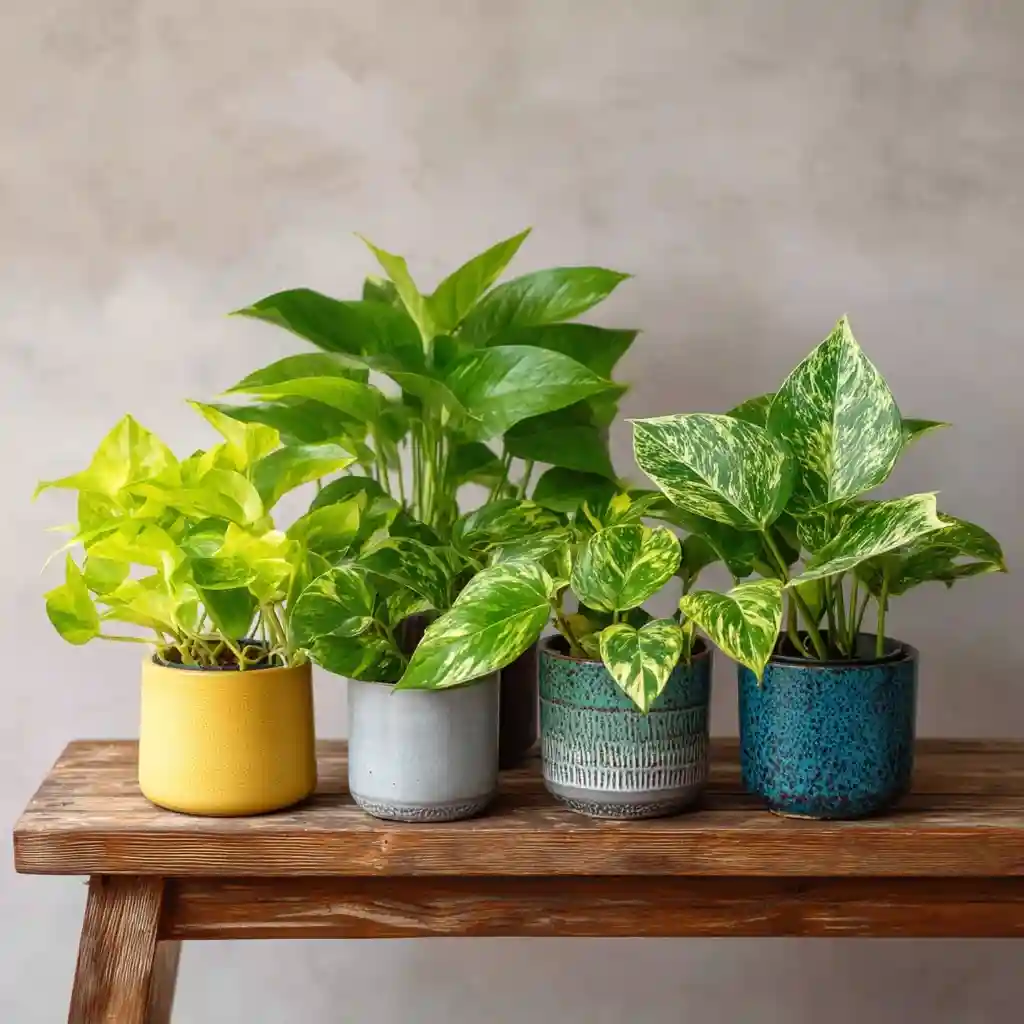Pothos plant care is one of the easiest and most rewarding routines any indoor gardener can adopt. With its lush trailing vines and minimal fuss, this houseplant is perfect for beginners and seasoned green thumbs alike. Known for its ability to thrive in low light and forgiving nature when it comes to watering, pothos brings a vibrant touch of greenery into homes, offices, and just about any indoor space.
Whether you’re hoping to brighten up your living room or add life to your work desk, the pothos plant is a reliable and beautiful choice. With the right care, it can flourish for years—growing into long, dramatic vines or forming full, bushy displays that demand attention without being needy.
Table of Contents
Popular Pothos Varieties
When it comes to Pothos plant care, one of the most enjoyable parts is choosing the right variety to suit your space and style. With so many types available, there’s a pothos for every personality—from bold and bright to soft and elegant.
1. Golden Pothos
The most classic and widely recognized, Golden Pothos has heart-shaped leaves with golden-yellow marbling. It’s a fast grower and incredibly adaptable.
2. Marble Queen Pothos
This striking variety features creamy-white variegation on deep green leaves. Its slower growth is balanced by its eye-catching appearance.
3. Neon Pothos
As the name suggests, this variety pops with bright, lime-green foliage that stands out in low-light spaces.
4. Pearls and Jade Pothos
Small but mighty, this cultivar has speckled green leaves edged in white and gray. It grows slower and stays more compact.
5. Manjula Pothos
With broad, wavy leaves and a swirl of cream, white, and green, Manjula is a showstopper in any collection.
6. Cebu Blue Pothos
Cebu Blue offers narrow, blue-green leaves with a slight metallic sheen. This variety is perfect for those who want something a bit different.
7. N’Joy & Snow Queen
Both of these variegated types have a crisp white and green look. N’Joy is a bit more compact, while Snow Queen has more intense white markings.
No matter which you choose, all these varieties follow the same basic Pothos plant care steps—making it easy to grow a mix without much extra effort.
Pothos Plant Information
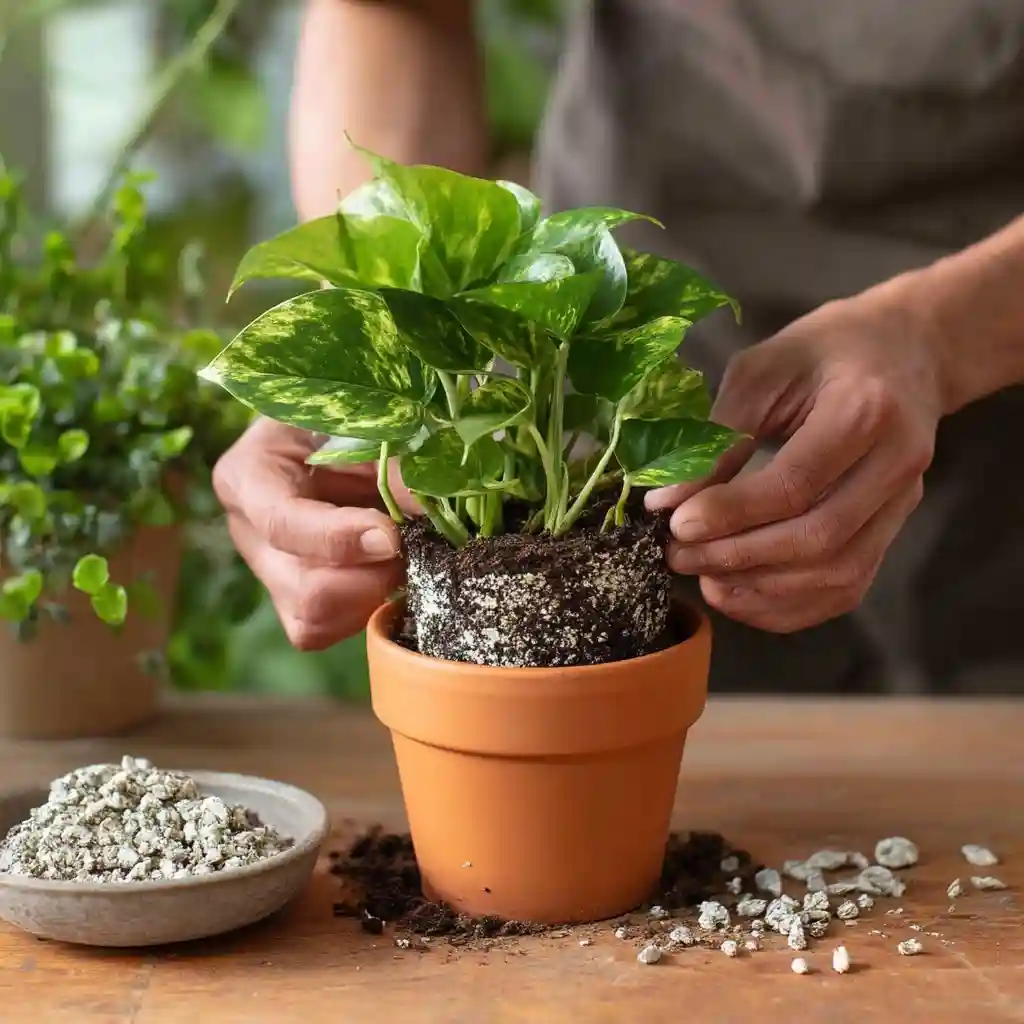
The pothos plant (Epipremnum aureum), sometimes called Devil’s Ivy or Money Plant, is a tropical vine native to Southeast Asia and the Pacific Islands. Thanks to its ability to tolerate low light, irregular watering, and a wide range of indoor conditions, it’s become one of the most popular houseplants worldwide.
Pothos belongs to the Araceae family and is known for its evergreen foliage that trails or climbs, depending on how it’s grown. In the wild, these vines can scale trees and structures, reaching impressive lengths. Indoors, they typically stay manageable but can still grow long, lush vines if provided with proper support.
Although it’s beautiful and easy to care for, it’s worth noting that pothos is mildly toxic to pets due to calcium oxalate crystals. If you have curious cats or dogs, it’s best to keep this plant out of their reach.
Whether you’re hanging it in a basket, letting it trail across a shelf, or encouraging it to climb a moss pole, mastering Pothos plant care will ensure your plant stays healthy and vibrant all year round.
How Long Pothos Can Grow Indoors?

With proper Pothos plant care, this hardy houseplant can grow indoors for many years—often thriving for a decade or more. Its resilience and adaptability make it an enduring choice for indoor gardeners of all levels.
In terms of size, indoor pothos vines typically reach 5 to 10 feet in length, although they can grow even longer with optimal conditions and support. If allowed to climb, pothos can develop larger leaves and more vigorous growth. Many plant lovers train their pothos on trellises, moss poles, or walls to encourage upward growth and fuller foliage.
On the other hand, when grown in hanging baskets or cascading from shelves, the plant produces long, trailing vines that add a soft, natural element to any room.
No matter how you grow it, as long as you stick to the basics of Pothos plant care, your vine will continue to thrive and impress for many seasons to come.
Propagating Pothos
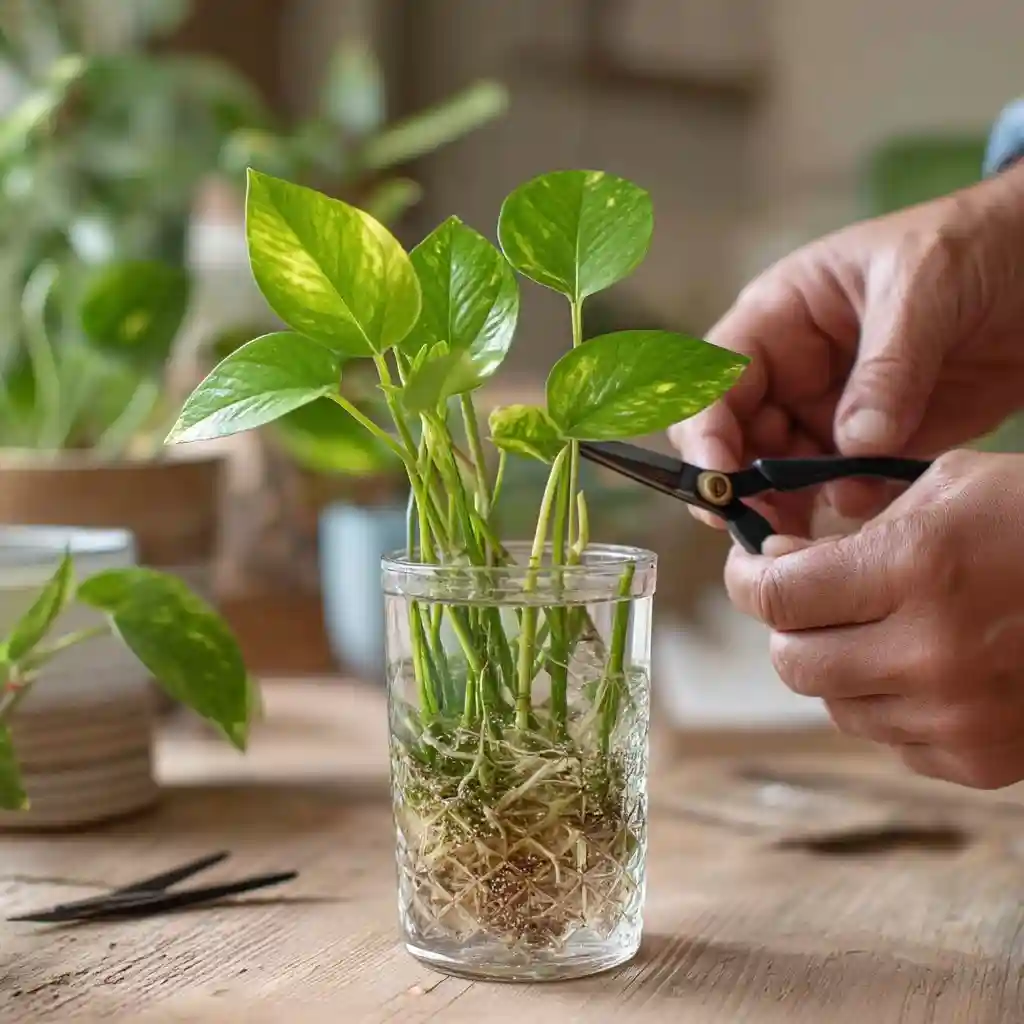
One of the most satisfying aspects of Pothos plant care is how easy it is to propagate this fast-growing vine. With just a few simple steps, you can multiply your pothos collection or share cuttings with friends and family.
Step-by-Step Pothos Propagation:
- Choose a Healthy Vine
Snip a stem just below a node (the bump where leaves and roots grow) using clean scissors or pruning shears. - Remove Lower Leaves
Strip away the leaves on the lower half of the cutting so they don’t sit in water or soil and rot. - Root in Water or Soil
- Water Method: Place the cutting in a jar of clean water, ensuring at least one node is submerged. Change the water every few days.
- Soil Method: Insert the cutting into moist potting mix and keep the soil lightly damp until roots establish.
- Wait for Root Growth
In about 1–2 weeks, you should see roots forming in water. In soil, gently tug after two weeks to check for resistance—an indicator that roots are forming. - Pot It Up
Once roots are about an inch or longer, transfer water-rooted cuttings to soil. If rooting in soil, just continue growing it in the same pot.
Propagation is not only fun—it also helps refresh leggy or sparse-looking pothos plants, giving them a fuller appearance when pruned cuttings are replanted back into the same pot.
Requirements for Growing Pothos
Location

Light plays a crucial role in successful Pothos plant care, but these adaptable vines don’t demand much. Pothos thrives in bright, indirect light, but it can also tolerate low-light conditions, making it perfect for rooms without strong sunlight.
To encourage vibrant growth and maintain variegation (especially in types like Marble Queen or Neon Pothos), place your plant near an east- or north-facing window. Rotate the pot occasionally to promote even growth on all sides.
Avoid direct afternoon sun, which can scorch the leaves. However, a couple of hours of gentle morning sunlight can be beneficial. If the plant becomes leggy or the leaves lose color, it’s likely craving more light.
Soil
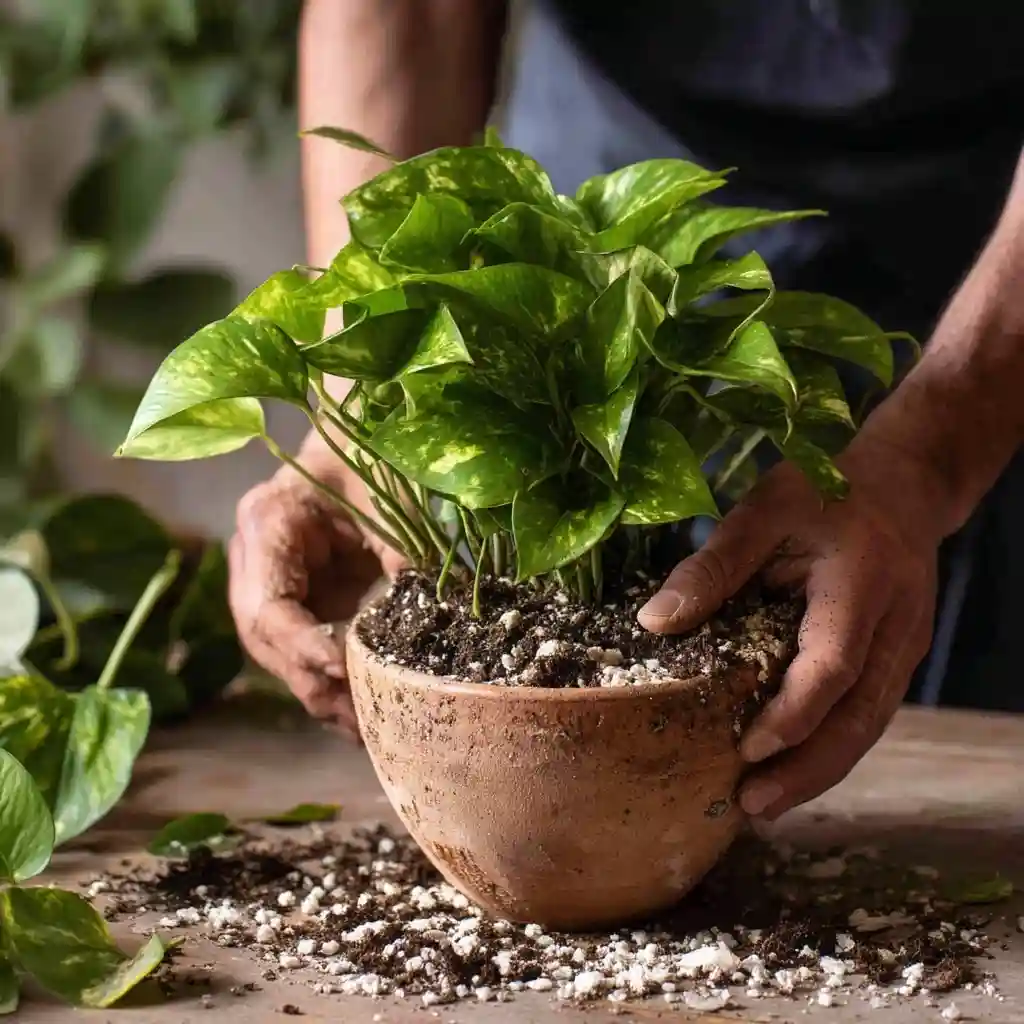
For optimal Pothos plant care, the right soil mix is key to keeping roots healthy and growth steady. Pothos prefers a well-draining, nutrient-rich soil that retains moisture without becoming soggy.
An ideal mix includes:
- 1 part potting soil (specifically formulated for houseplants)
- 1 part peat moss or coco coir (for moisture retention)
- 1 part perlite or coarse sand (to improve drainage)
This blend creates a loose, airy structure that prevents root rot—a common issue when pothos sits in waterlogged soil.
Avoid using garden soil or compacted mixes, which can suffocate roots and lead to fungal problems. If you’re using pre-mixed indoor plant soil, consider adding extra perlite for improved aeration.
Watering
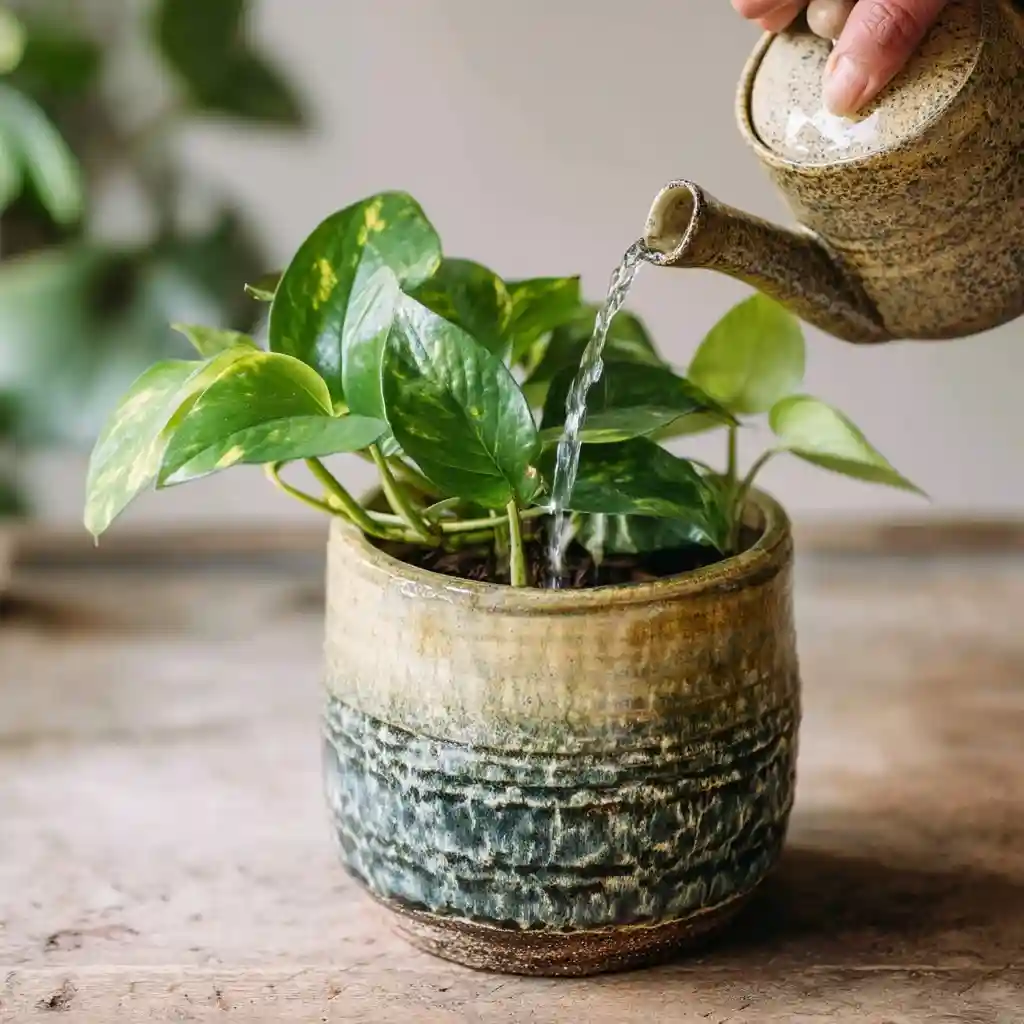
Consistent but careful watering is a cornerstone of good Pothos plant care. This plant is relatively forgiving, but overwatering is one of the few ways to cause serious harm.
How to Water:
- Allow the top 1–2 inches of soil to dry out between waterings.
- Stick your finger into the soil—if it feels dry at that depth, it’s time to water.
- Water thoroughly until you see it draining from the bottom, then empty the saucer to prevent soggy roots.
Signs of Overwatering:
- Yellowing leaves
- Mushy stems
- Musty soil smell
Signs of Underwatering:
- Wilting or drooping leaves
- Crispy leaf edges
During winter, reduce how often you water, as the plant’s growth slows and it uses less moisture. Remember: it’s always safer to underwater slightly than to overdo it.
Temperature and Humidity
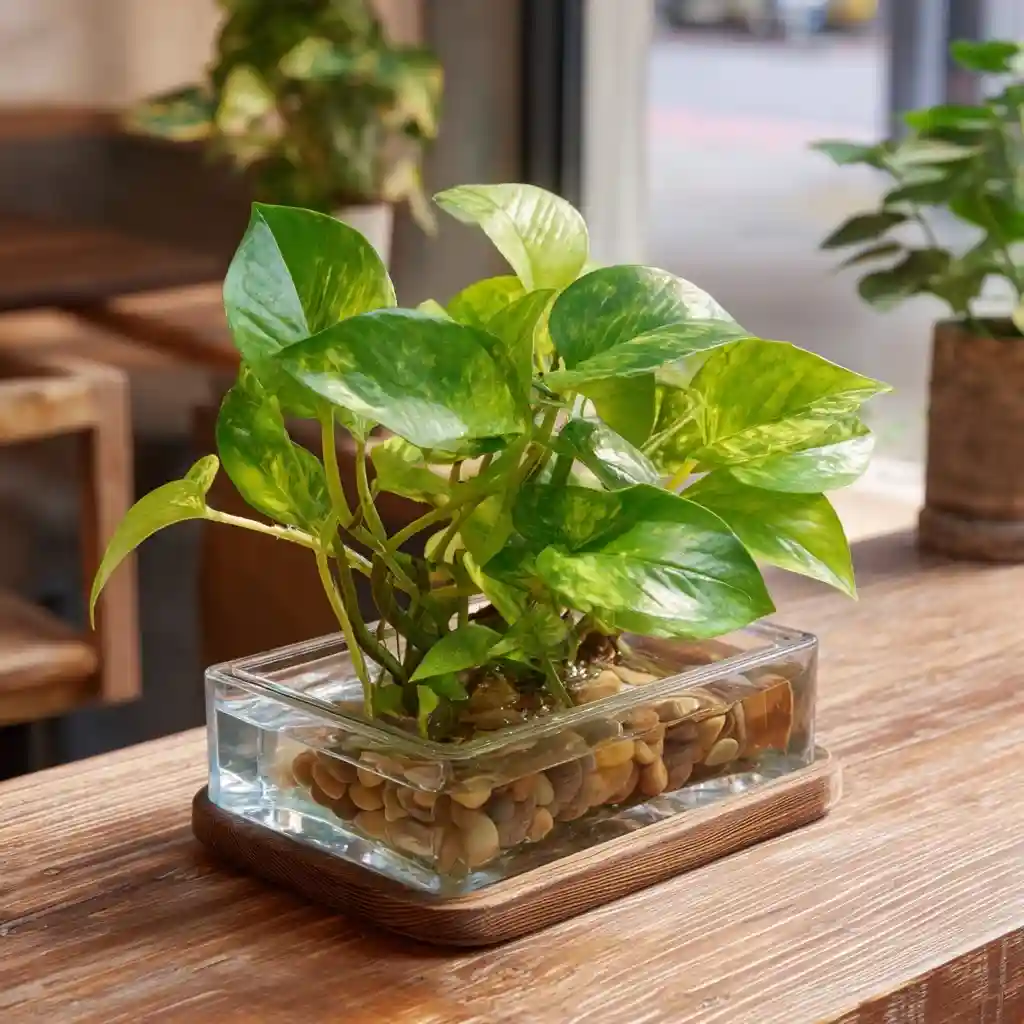
To keep your plant thriving, maintaining the right indoor environment is essential for proper Pothos plant care.
Ideal Temperature:
- 60–85°F (15–30°C) is the sweet spot.
- Avoid exposing the plant to temperatures below 50°F (10°C)—cold drafts can damage the leaves.
Most homes already provide suitable conditions, especially during spring and summer. If your pothos is near an air conditioner or drafty window, move it somewhere warmer.
Humidity:
Pothos enjoys moderate to high humidity, but it’s surprisingly tolerant of dry indoor air—another reason it’s so easy to grow.
To boost humidity:
- Place the pot on a pebble tray with water.
- Group with other plants to create a humid microclimate.
- Mist occasionally, especially during dry winter months.
A healthy balance of warmth and moisture helps promote lush foliage and strong growth.
Support
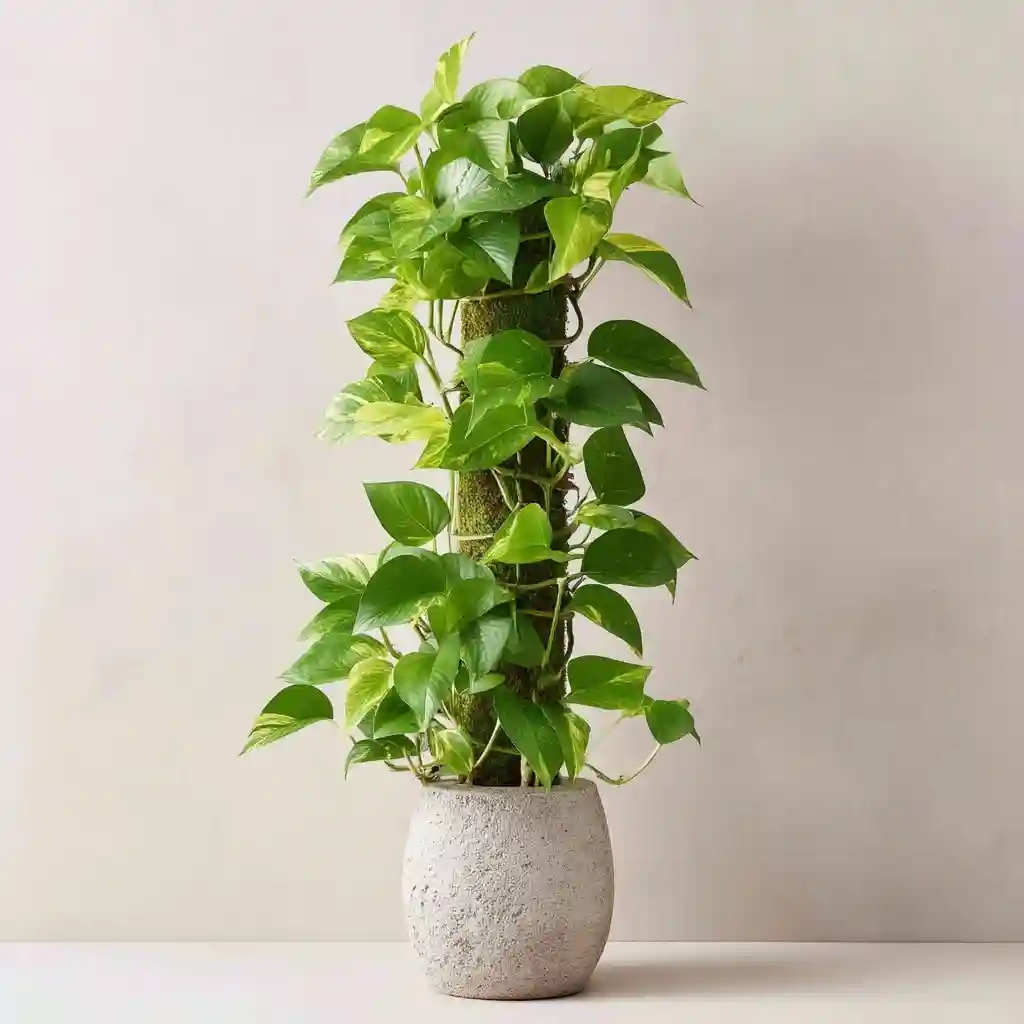
Support isn’t just for aesthetics—it can actually enhance leaf size and growth, making it a key tip in advanced Pothos plant care.
When pothos is grown upright, it mimics its natural climbing behavior, triggering the plant to produce larger, more vigorous leaves.
Popular Support Options:
- Moss poles – Provide moisture and a textured surface for aerial roots to grip.
- Coco coir poles – Similar to moss poles, great for climbing varieties.
- Trellises or wall hooks – Useful for directing vines upward decoratively.
If left to trail, pothos still grows beautifully, but with smaller leaves and a more delicate appearance. For fuller foliage and a jungle-like vibe, train your plant vertically with proper support.
Fertilizer
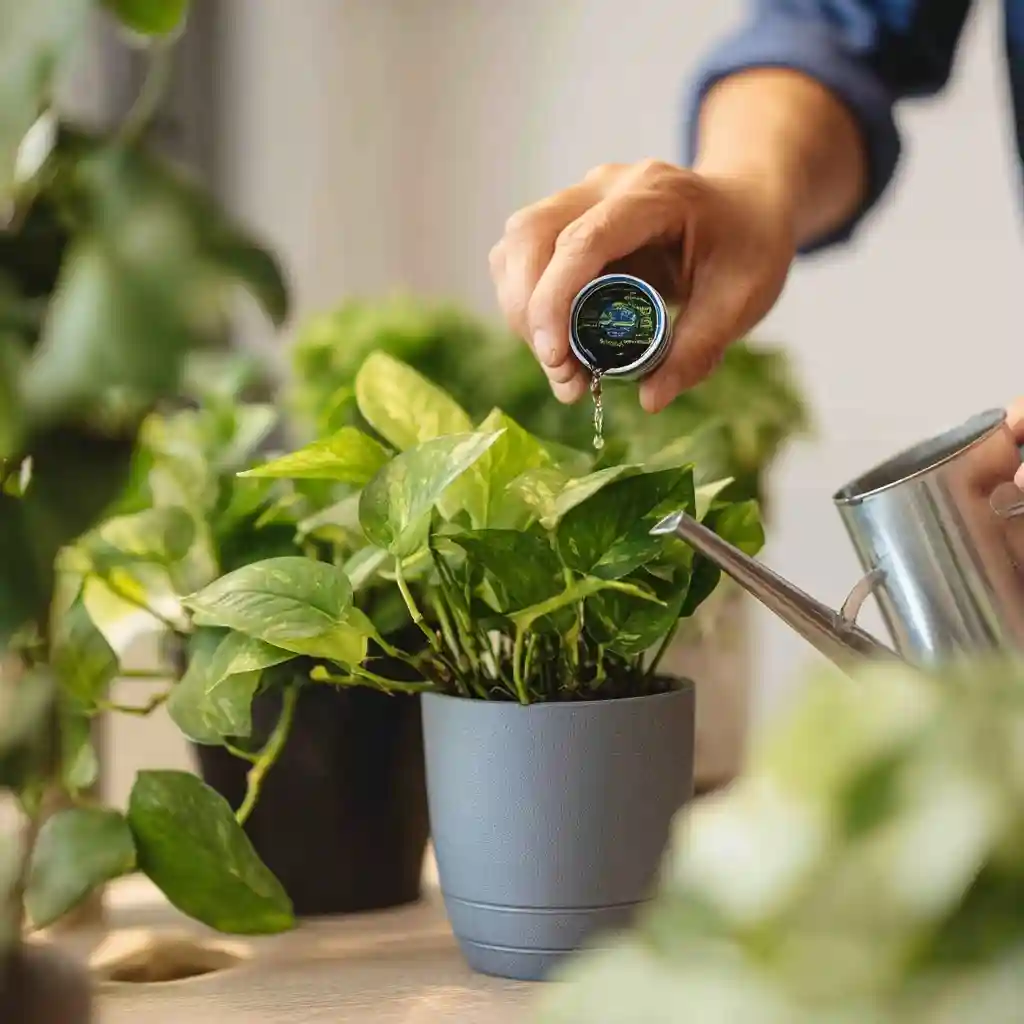
While pothos doesn’t need heavy feeding, the right fertilizer routine can give your plant a healthy boost, especially during the active growing seasons—spring and summer.
Best Practices for Pothos Plant Care Fertilizing:
- Use a balanced liquid fertilizer (e.g., 20-20-20) every 4–6 weeks during the growing season.
- For more frequent feeding, dilute the fertilizer to half or quarter strength and apply every 2–3 weeks.
- Stop fertilizing in winter when the plant’s growth naturally slows.
Too much fertilizer can cause leaf burn, especially at the edges. If you notice browning or curling tips, flush the soil with water to remove excess salts and reduce feeding frequency.
Pro tip: Always fertilize after watering to prevent root shock.
Repotting
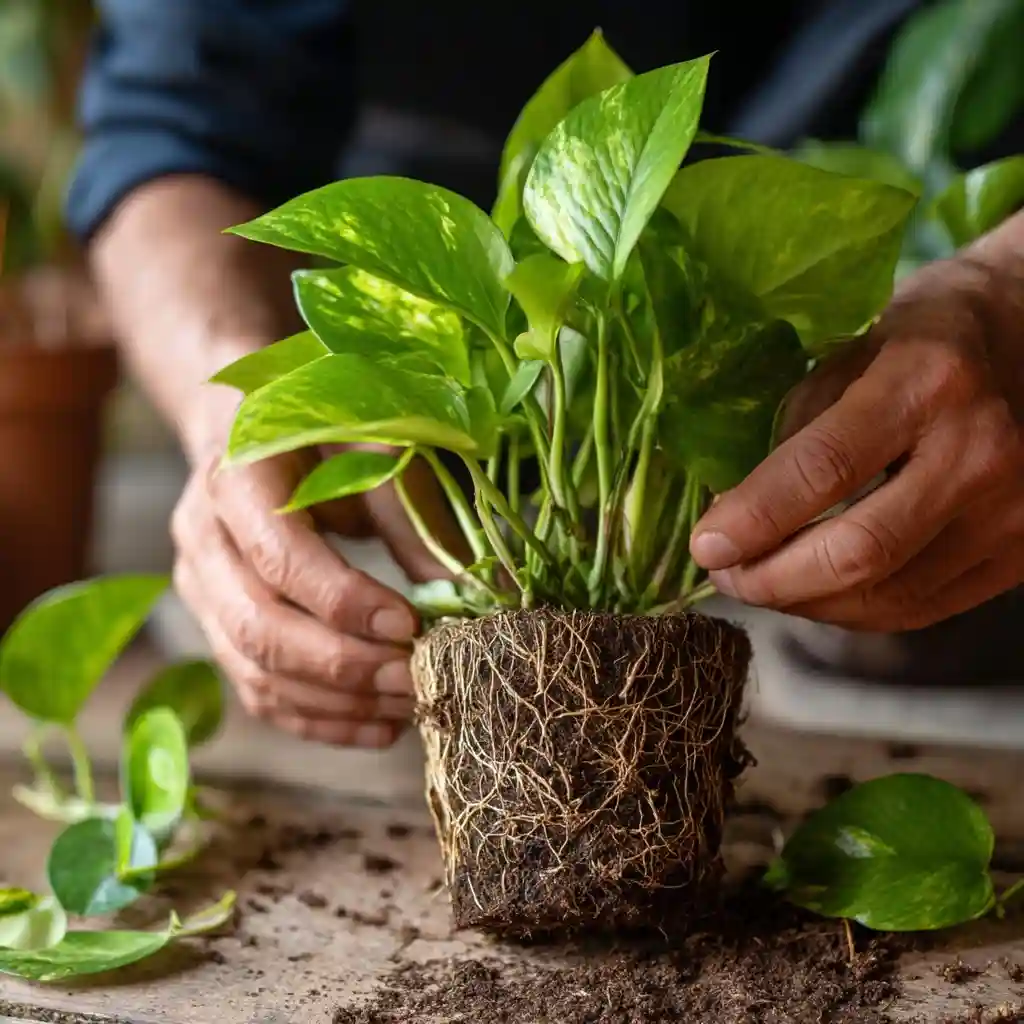
Proper repotting is an essential part of long-term Pothos plant care. While pothos likes to be a bit root-bound, it eventually outgrows its pot and needs more room to flourish.
Signs It’s Time to Repot:
- Roots circling the bottom or poking out of the drainage holes
- Slowed growth despite regular care
- Soil drying out too quickly after watering
How to Repot:
- Choose a pot that’s 1–2 inches larger in diameter than the current one.
- Use fresh, well-draining potting mix to replace or supplement the old soil.
- Gently loosen the root ball and remove any dead or mushy roots.
- Center the plant in the new pot, fill around with soil, and water thoroughly.
The best time to repot is spring or early summer, when the plant is actively growing. In tropical or frost-free climates, you can repot year-round.
Don’t forget to tie up long vines or trim them back before repotting to make handling easier.
Pruning
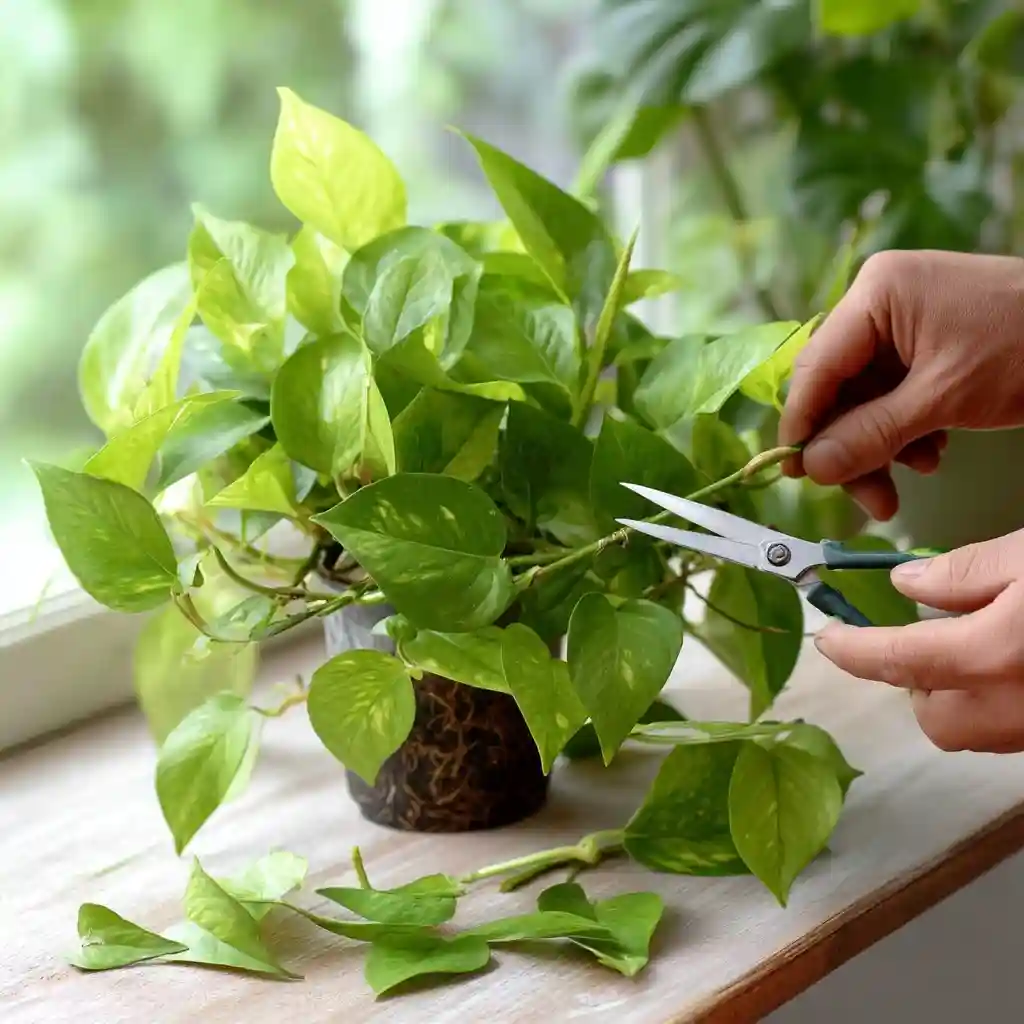
Regular pruning is a simple yet powerful way to keep your plant full, healthy, and under control. In fact, strategic trimming is a key part of effective Pothos plant care.
Why Prune?
- Encourages bushier growth
- Removes yellowing or damaged leaves
- Shapes leggy vines
- Controls size in smaller spaces
How to Prune:
- Use clean, sharp scissors or pruning shears.
- Cut just above a node (where a leaf meets the stem).
- Remove any dead or yellowing leaves at the base.
- For legginess, trim back long vines to encourage new shoots near the crown.
Pro tip: Don’t toss your cuttings! Replant them in the same pot to create a fuller plant or propagate them in water or soil.
When to Prune:
You can prune pothos any time during the growing season—spring through early fall. Light, frequent pruning every few weeks will promote the best results.
Pests and Diseases

Although relatively low-maintenance, even the toughest indoor plants occasionally face issues—and Pothos plant care includes keeping an eye out for common pests and diseases.
Common Pests:
- Spider mites – Look for fine webs and speckled leaves.
- Mealybugs – White, cottony clusters often hide in leaf joints.
- Scale insects – Brown or black bumps on stems and undersides of leaves.
How to Treat:
- Wipe affected areas with a cotton ball soaked in rubbing alcohol.
- Spray with insecticidal soap or neem oil for severe infestations.
- Isolate the plant until pests are gone.
Common Disease:
- Phytophthora root rot – Caused by overwatering and poor drainage.
- Symptoms: Yellowing or blackening leaves, soft stems, mushy roots.
- Solution: Remove affected roots, repot in dry, well-draining soil, and reduce watering frequency.
Prevention is the best medicine: avoid overwatering, maintain good airflow, and keep foliage clean and dry.
Growing Pothos in Water
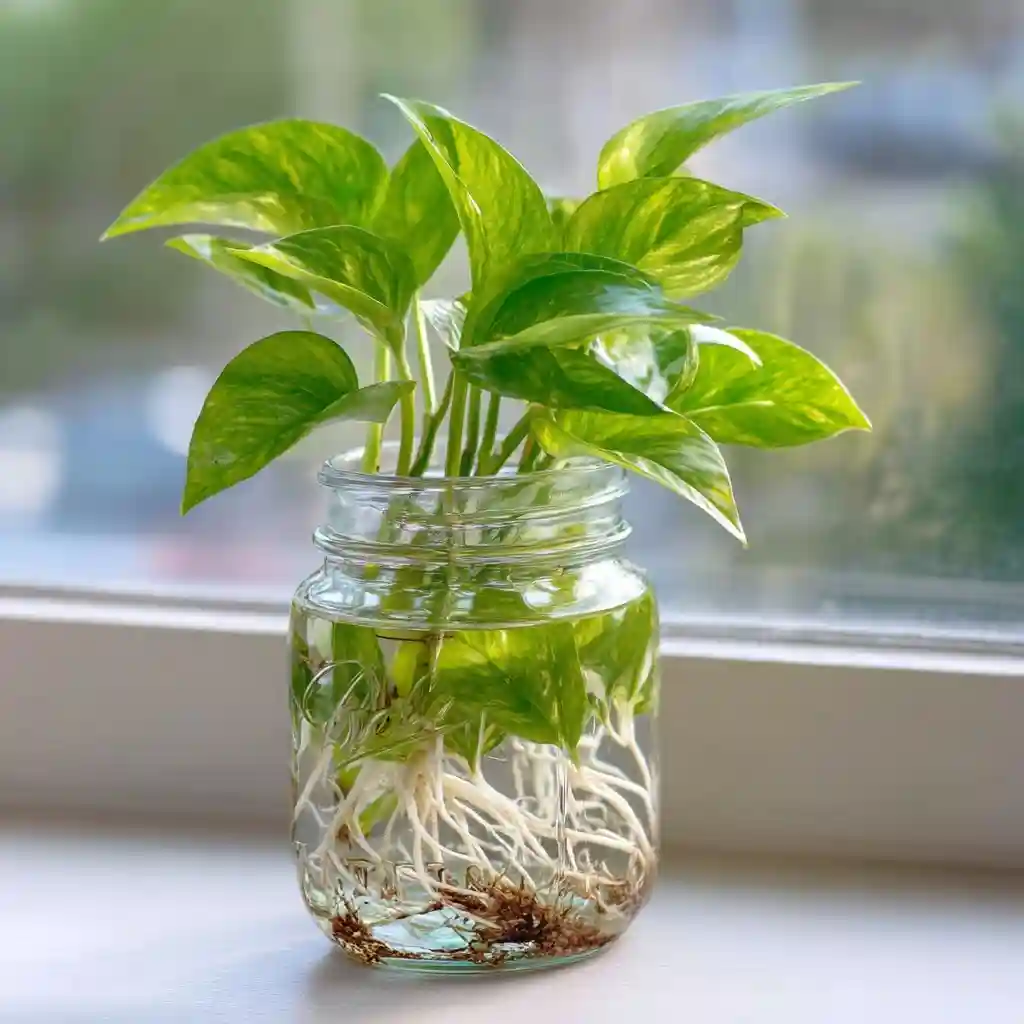
One of the most versatile aspects of Pothos plant care is how well it adapts to growing in water. Whether you’re short on space, avoiding soil mess, or just love a clean, modern aesthetic, water-grown pothos is a fantastic option.
How to Grow Pothos in Water:
- Choose a healthy cutting with at least one node.
- Place it in a glass jar, vase, or bottle filled with clean water.
- Ensure the node is submerged—that’s where roots will form.
- Keep the container in bright, indirect light.
- Change the water every 5–7 days to prevent stagnation and algae growth.
Water-grown pothos grows slower than those in soil but can still develop strong, healthy vines. Once roots are established, you can either continue growing it in water or transition it to soil.
Tip: Add a small amount of liquid houseplant fertilizer to the water once a month to supply nutrients.
Pothos Plant Indoor Uses
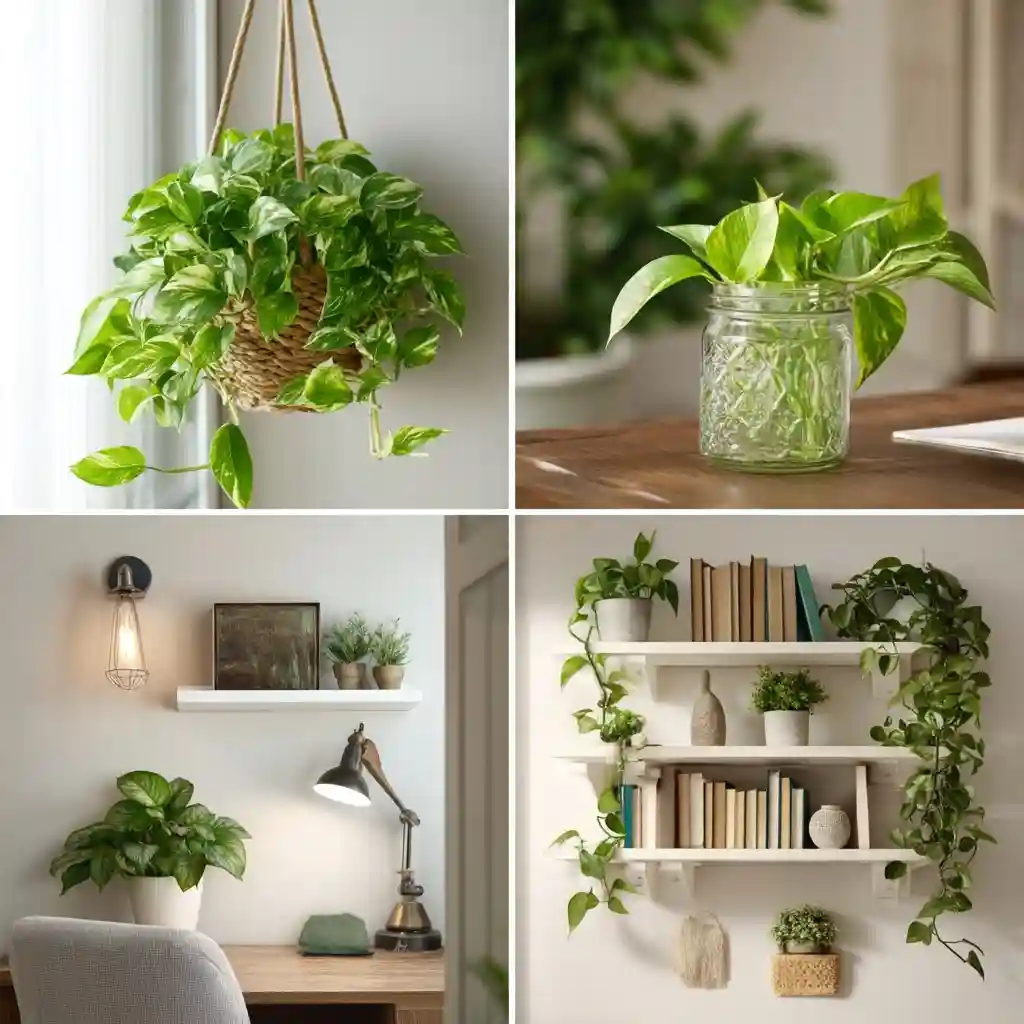
Thanks to its versatility and beauty, pothos is one of the most practical and decorative plants for any indoor space. Incorporating it into your home isn’t just about greenery—it’s also about enhancing mood and visual appeal with minimal effort.
Popular Ways to Use Pothos Indoors:
- Hanging Baskets: Let long vines cascade down bookshelves, windows, or from ceiling hooks for a dramatic, trailing effect.
- Tabletop Décor: Place a smaller pothos in a pot or jar on your desk, coffee table, or nightstand.
- Climbing Accent: Train it on a moss pole, trellis, or wall grid to create a living vertical feature.
- Water Vases: Grow in glass jars on countertops or bathroom shelves for a clean, minimalist look.
- Mixed Displays: Pair with other low-light indoor plants like snake plants or peace lilies for a lush, layered display.
Whether your aesthetic is modern, boho, or cottagecore, there’s always room for pothos. Best of all, it doesn’t demand much in return.
Pothos Plant Benefits
Beyond beauty and ease of care, the pothos plant offers a variety of practical and even health-related benefits—making it more than just décor.
Top Benefits of Pothos:
- Air Purification: NASA studies have shown that pothos can help remove indoor toxins like formaldehyde, benzene, and carbon monoxide, improving air quality naturally.
- Stress Reduction: Simply seeing greenery like pothos can have a calming effect. Studies suggest it may help reduce anxiety and mental fatigue, especially for those working long hours indoors.
- Eye Relief: Some believe gazing at green foliage like pothos can help soothe tired eyes—particularly after screen time.
- Good Luck Symbol: In many cultures, especially through Feng Shui and Vastu, pothos is believed to bring good fortune, prosperity, and positive energy when placed in the right spot.
- Low Maintenance: Perfect for busy lifestyles, pothos thrives with little attention—making it one of the best plants for beginners or anyone with a hectic schedule.
So if you’re looking for a plant that’s both beautiful and beneficial, pothos checks all the boxes.
Conclusion
Pothos plant care is simple, flexible, and incredibly rewarding. Whether you’re growing it in soil or water, training it up a pole, or letting it trail from a shelf, this plant is one of the easiest ways to bring vibrant greenery into your home. With a little light, occasional watering, and minimal fuss, your pothos will grow into a lush, leafy companion that lasts for years.
From beginners looking for a low-maintenance starter plant to seasoned indoor gardeners expanding their collection, pothos offers beauty, air purification, and a touch of good luck—all in one leafy package.
🌿 Love gardening inspiration? Follow me on Pinterest for bold plant ideas, tips, and seasonal color!
More Posts







